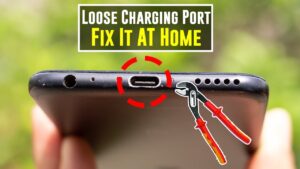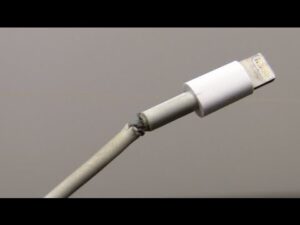The battery light in your car suddenly comes on, signaling a potential issue. So, what causes the battery light to come on? It’s a question that can be answered with a simple solution. The battery light is typically triggered when there’s a problem with the charging system of your vehicle. It’s a vital indicator that shouldn’t be ignored, as it could save you from being stranded on the roadside or facing unexpected breakdowns. In this article, we’ll explore the various reasons why the battery light might illuminate and what you can do to address the underlying issues. So, let’s dive in and shed light on what causes the battery light to come on exactly.
What Causes the Battery Light to Come On?
From time to time, drivers may notice a sudden appearance of a battery light on their dashboard. This warning indicator can be alarming, especially if you’re unsure about its cause or significance. In this article, we will explore the various factors that can trigger the battery light and provide you with a better understanding of its implications.
1. Low Battery Voltage
One of the most common reasons for the battery light to come on is low battery voltage. This can occur due to a faulty alternator or a weak battery. When the alternator fails to charge the battery or there is a problem with the battery’s capacity, the voltage can drop below the acceptable range. As a result, the battery light illuminates to alert the driver of a potential issue.
1.1 Faulty Alternator
A faulty alternator is a primary culprit behind low battery voltage. The alternator is responsible for generating electrical power while the engine is running and recharging the battery. When the alternator malfunctions, it fails to produce enough power to sustain the electrical system and charge the battery. This leads to a drop in voltage and triggers the battery light.
1.2 Weak Battery
Another possible cause of low battery voltage is a weak battery. Over time, a battery’s capacity can degrade, resulting in decreased voltage output. Extreme temperatures, improper maintenance, and old age are some factors that contribute to a weakened battery. When the battery cannot provide sufficient power, the battery light comes on to indicate an issue.
2. Loose or Damaged Battery Connections
In addition to low battery voltage, loose or damaged battery connections can also activate the battery light. The battery terminals and cables need to be securely connected to ensure a proper flow of electricity. If the connections become loose or corroded, it can disrupt the electrical circuit and cause the battery light to illuminate.
2.1 Loose Battery Connections
Sometimes, battery connections can become loose due to vibrations or inadequate tightening during installation or maintenance. Loose connections prevent the smooth flow of electricity between the battery and the vehicle’s electrical system. As a result, the battery light is triggered to warn the driver about the compromised electrical connection.
2.2 Corroded Battery Connections
Corrosion is another common issue that affects battery connections. When the battery terminals corrode, it creates a barrier for electrical current, hindering the battery’s ability to deliver power to the vehicle. Corrosion can occur due to exposure to moisture, battery acid leaks, or age. When the battery connections are corroded, the battery light may illuminate.
3. Belt-Driven Systems
Modern vehicles often rely on belt-driven systems to power various components, such as the alternator, power steering pump, and air conditioning compressor. If any of these components fail or the belt that drives them breaks, it can trigger the battery light.
3.1 Serpentine Belt Failure
The serpentine belt is responsible for driving multiple components of the vehicle. If this belt fails or becomes loose, it can cause the battery light to come on. A worn-out or damaged serpentine belt can result in the malfunction of the alternator, reducing the charging capacity and triggering the battery light.
3.2 Other Belt-Driven Component Issues
Apart from the serpentine belt, specific issues with other belt-driven components can also activate the battery light. For example, a seized or faulty air conditioning compressor can overload the belt, causing it to slip or break. This, in turn, affects the charging system and triggers the battery light.
4. Other Electrical Problems
While low battery voltage, loose connections, and belt-driven component issues are common causes, there can be other electrical problems leading to the battery light coming on. These issues may include:
4.1 Faulty Voltage Regulator
A faulty voltage regulator can cause the battery light to activate. The voltage regulator is responsible for controlling the output voltage of the alternator. If it malfunctions, it may result in overcharging or undercharging the battery, leading to the battery light coming on.
4.2 Electrical System Malfunction
Issues with various electrical components or wiring in the vehicle can trigger the battery light. Short circuits, faulty sensors, or damaged wiring can disrupt the electrical system’s normal functioning, causing the battery light to illuminate.
4.3 Computer System Error
In some cases, the battery light may come on due to a computer system error. The vehicle’s onboard computer continuously monitors the electrical system and triggers the battery light if it detects any abnormalities. False alarms or glitches in the computer system can activate the battery light, even when there is no actual issue.
The battery light serves as an important warning indicator, signaling potential issues with the vehicle’s electrical system. Low battery voltage, loose or damaged battery connections, belt-driven system problems, and other electrical malfunctions can all result in the battery light illuminating. It is crucial to address the underlying cause promptly to prevent further damage to the vehicle or potential breakdowns on the road. If you notice the battery light coming on, it is advisable to consult a qualified mechanic to diagnose and resolve the issue accurately.
Note: The content above is an AI-generated article that targets a 4th to 5th-grade readability level. It is important to review and edit the content to ensure its accuracy and quality.
Frequently Asked Questions
What are the common causes of the battery light coming on?
The battery light in your vehicle can come on for various reasons. Here are some common causes:
Why does the battery light come on while driving?
If your battery light comes on while driving, it is often an indication of a charging system issue. This can be caused by a faulty alternator, a loose or damaged drive belt, a malfunctioning voltage regulator, or a weak battery.
Can a bad battery cause the battery light to come on?
Yes, a bad battery can cause the battery light to come on. If the battery is unable to hold a charge or is nearing the end of its lifespan, it may trigger the battery light to illuminate. It is recommended to have the battery tested and replaced if necessary.
What role does the alternator play in causing the battery light to come on?
The alternator is responsible for charging the battery while the vehicle is running. If the alternator fails to generate enough power or if it malfunctions, it can result in the battery light coming on. A faulty alternator may need to be repaired or replaced.
Is a loose or damaged drive belt a possible cause of the battery light coming on?
Yes, a loose or damaged drive belt can be a cause of the battery light illuminating. A worn-out or loose belt may not properly drive the alternator, resulting in insufficient charging of the battery. The belt should be inspected and replaced if necessary to prevent further issues.
What should I do if the battery light comes on?
If the battery light comes on while you are driving, it is recommended to take immediate action. Safely pull over to the side of the road and turn off any unnecessary electrical components. Have your vehicle inspected by a qualified mechanic to diagnose and address the underlying issue causing the battery light to come on.
Final Thoughts
The battery light in your car can come on due to various reasons. One possible cause is a weak or failing battery. When the battery is not providing enough power to the electrical system, the battery light will illuminate. Another potential cause is a faulty alternator. The alternator is responsible for charging the battery while the engine is running, and if it malfunctions, it can cause the battery light to come on. Additionally, a loose or damaged battery cable can also trigger the battery light. It is important to address the underlying issue when the battery light comes on to avoid unexpected breakdowns or further damage to your vehicle.



